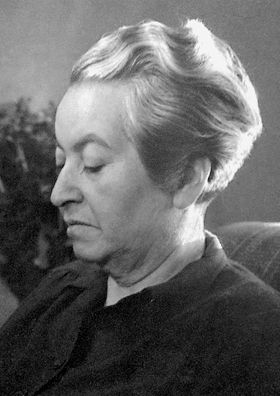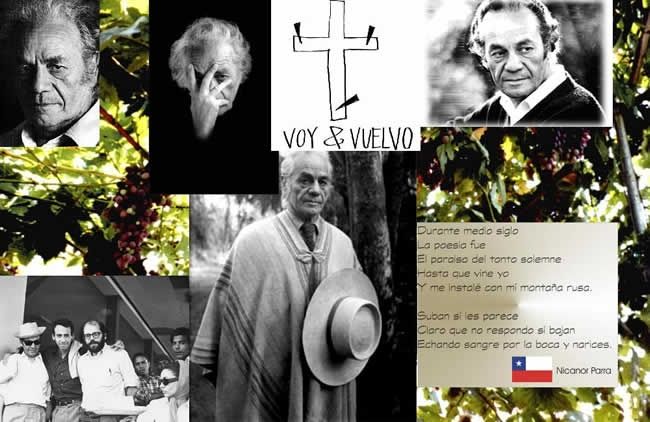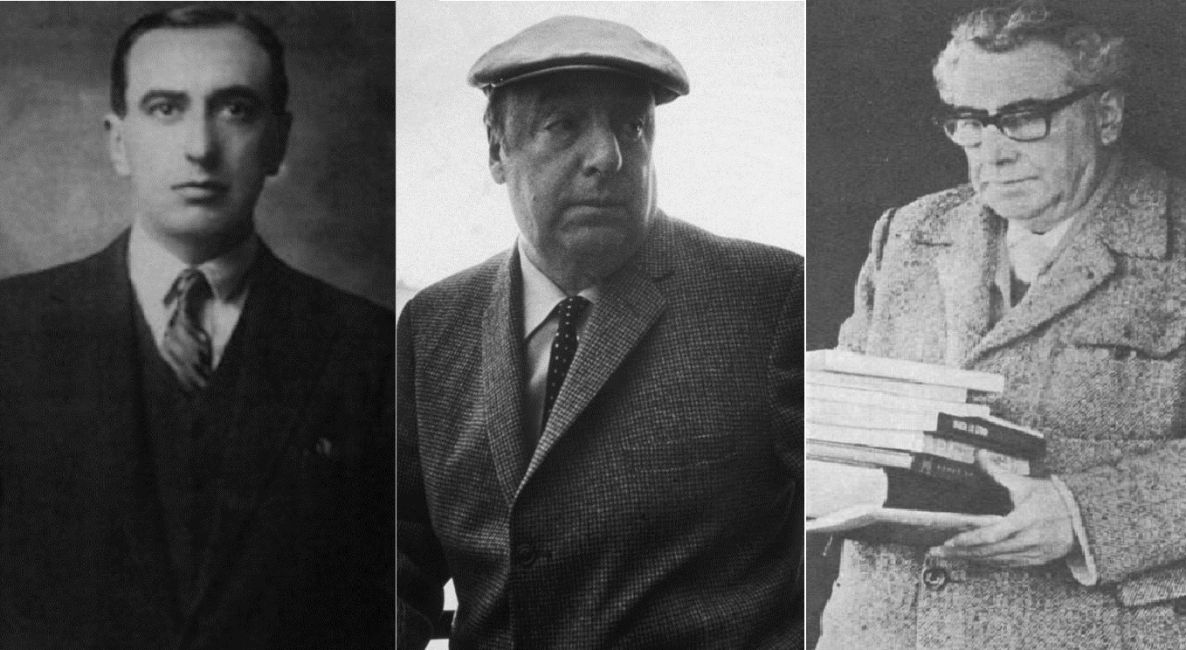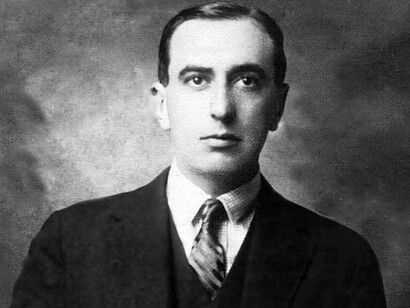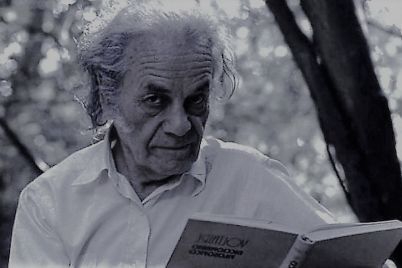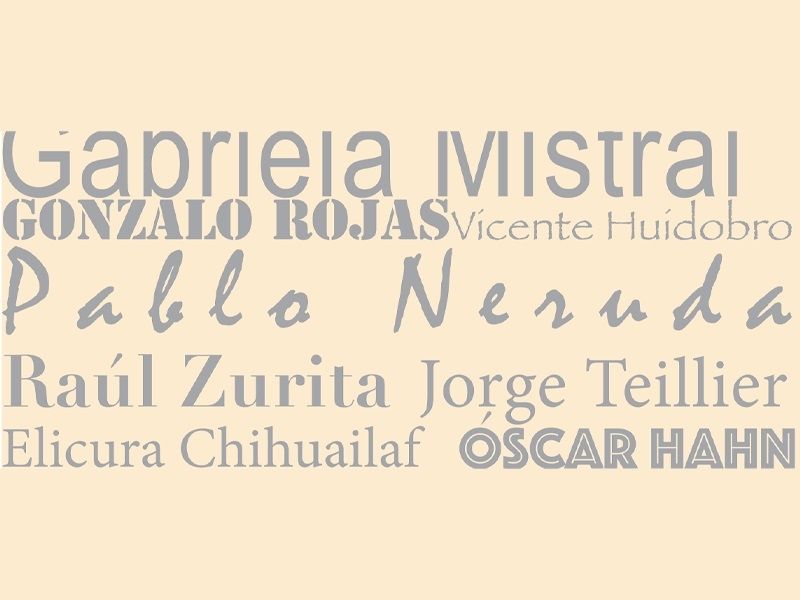Chilean Poets
Chile is a land of Poets, we have had trough history important figures that shared the beauties and the struggles of our country through their verses, we will quickly go through some of the most representatives’ figures of this literary genre and tell you a bit more about their life and trajectories.
To start we will mention Alonso de Ercilla, Spanish national, he wrote the epic poem La Araucana (1569) and its inspiration came from the Mapuche people, who decided to defend their land from the foreign invader, the breathtaking landscapes of the pristine new continent and the bravery of the indigenous people from this region, after the publication of La Araucana another epic poem was published by Pedro de Oña, recognized as the first Chilean poet, this poem called Arauco Domado was commissioned by Captain García Hurtado de Mendoza who felt misrepresented in Ercilla’s poem due to a previous quarrel between the captain and the author of La Araucana poem.
We will move forward in time, to talk about, perhaps, one most important exponent of Chilean poetry, not only when we talk about her literary work, but furthermore, the work that she did as a diplomat and professor all over the world, we are talking about Gabriela Mistral, born in 1889, publish for the first time in 1908, she was a prolific author and a referent in the education field in North and South America, she cooperated with the Mexican government in their educational reform, taught and collaborated with important universities in the US, The Antilles, Panama, Cuba and Puerto Rico. She received the Literature Nobel prize in 1945 among other recognitions and was appointed consul and representative of the UN, she lived in New York until her passing.
During the decade of the 30´s we have three poets that were very representative of the tumultuous times that our country was living during those years, the three of them declared communist and each other antagonists, Pablo Neruda, Vicente Huidobro and Pablo de Rokha, are three poets with very different backgrounds and writing styles, Huidobro was the creator of a literary current called Creationism; De Rokha´s poetry focus on the decline of the oligarchic order in Chile and the consolidation of fascism, Nazism and Stalinism in Europe, as a prelude to World War II; Neruda´s poetry was defined by Huidobro as “an easy, goofy poetry, within the reach of any feather duster". De Rokha added: "Neruda is the poet of the murky and the sticky and the vague and the agonizing of being (...), the poet of the ferments and the dung heaps of the spirit and literature." The feud between the writers continues throughout their lives. We could say that Neruda´s “Canto General” has a social and political significance in Chilean history, one of the poems “Alturas de Machu Pichu” was musicalized by an iconic folklore/rock Chilean Band called Los Jaivas, in 1981, who were living in exile after the coup de Etat. Neruda worked as a diplomat in different countries and was also recognized as a poet with the literature Nobel prize in 1971 among other important recognitions.
We will finish this blog by talking about perhaps one of the poets that somehow broke the rules of what we thought poetry should be. We are talking about Nicanor Parra, the oldest of the Parra clan, a family of artists, folklorists, and poets. Nicanor created the Anti-poetry, he was the only one of his siblings to complete a higher education program, being a young men he moved from Chillan to Santiago, with the idea of joining the police, but fate had other planes for him and with a scholarship, he complete his last year of school at an important boarding school, INBA, and after he completed a bachelor’s degree on Math and Physics from Universidad de Chile, in 1937 he start working as a teacher and at the same time publish his first collection of poems called “Cancionero sin nombre”, after some recognitions, Parra has the opportunity to meet Neruda and Mistral and he dedicated Mistral a poem called “Canto a la escuela” , she compliment his work and called him “the future poet of Chile” and she was right. He continued his studies in Brown University in the US where he completed a postgrad in Advance Mechanics, he returns from the US as a physicist specializing in indeterminacy and relativity, in 1949 thanks to a British Council scholarship, he went to study cosmology for two years in Oxford, England. Parra works as a faculty and head of the math and physics department at Universidad de Chile for over 20 years. During an important poetry festival in the US, he innocently took a picture with Nixon, and this brought up many opinions among poets and academics condemning the simple action of a picture and this enhanced his independent spirit.
Here we only name a handful of Chilean poets, except for Ercilla, he was Spanish, but his work in La Araucana remains until today as a referent of the pre-Columbian life in south América and the painful colonization years. There are many other brilliant authors that was impossible to include because it would have been a very long post.
We hope that this blog made you wonder more about the Chilean poets and the land that inspired them! Come to Santiago, and learn more about Chilean authors, history, and culture. Do not wait any longer! We have many options for you to choose from, check out our web!
Related Posts

EAT, DRINK, EXPLORE: SANTIAGO
BEST FOOD TO EAT IN SANTIAGO CHILE Empañadas are bound to become your round-the-clock, go-to chow in Santiago. That’s because every empañada – no matter what the filling - starts... keep reading
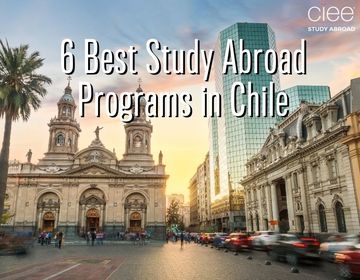
6 Best Study Abroad Programs in Chile
If you’re asking yourself, “Is Chile a good place to study abroad?” the answer is a resounding yes! Step off the plane into a city buzzing with life, where snow-capped... keep reading
Service Learning in Santiago, Chile
When I started my service-learning placement at El Museo de la Memoria y los Derechos Humanos (MMDH), I was more nervous than excited. My role with the reception team was... keep reading
